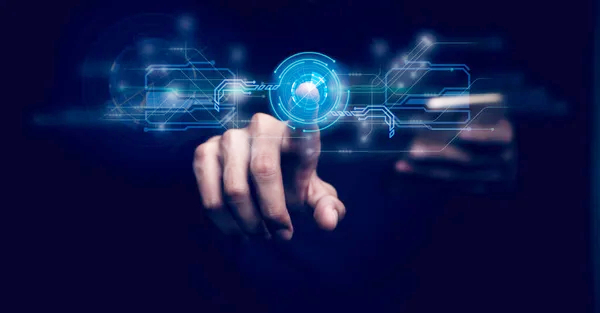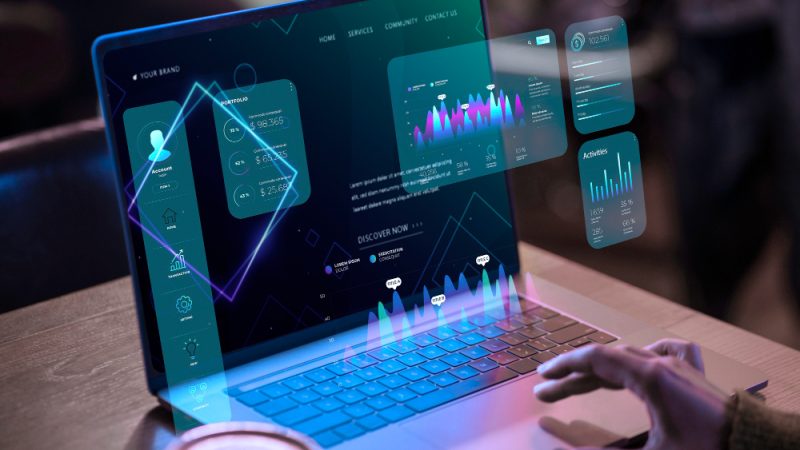Revolutionary Technology Enabling Industries to be More Instant, Visual, and Intuitive
While computer vision and image recognition are used interchangeably across the globe, there is a significant difference between the two technologies. Computer vision enables computers to initiate human vision and take necessary action while image recognition carries out the pixel and pattern analysis of the image to identify the image as a particular object. Image recognition has become one of the key technologies in today’s world and has been widely applied in various end-use domains such as gaming, medical, and automotive, among others.
Over the recent years, increasing research has been carried to advance versatile image recognition. Amalgamation of image local features and machine learning have further expanded the application of image recognition technology and has become an integral part of the Internet of Things (IoT), brain human interfaces, and Industrial Internet of Things (IIoT). Moreover, application of deep learning in image recognition tasks has achieved big successes in various computer vision tasks with better results and flexibility. With the rise of smartphones and cheaper and affordable cameras, a way has been paved for the new era of image recognition. According to the latest analysis by Reports and Data, the global image recognition market is expected to reach USD 98.96 Billion in 2030 and register a revenue CAGR of 14.2% during the forecast period.
Image Recognition – A Brief Overview and its Working
Image recognition is a technology based on deep technology that enables identification of objects, people, entities, and other variables in images. Image recognition can be referred to as digital image or video process that identifies and detects an object or feature that is enhanced through the use of artificial intelligence (AI). AI can search for images on social media platforms and segment them into different databases to identify and determine which ones are relevant to image search.
Convolutional neural network is a classification for classifying images into labeled classes and various layers of CNN efficiently extract image features and classify the images. CNN is a feed-forward network in AI that is widely used for image recognition. Convolutional neural network extract each and every portion of the input image – also known as receptive field. Application of CNN in images covers classification, assigning categories to images, detection with respect to location of various objects, location around the object, and segmentation of objects and images.
The first step in image recognition and classification is the discretization of the image into pixels where each pixel can have a value depending on the color and shape. The convolution operation, which is an integral part of the CNN, applies filters to a specific part of the image to identify local features. Deep learning methods are deployed to determine the boundary range of vectors that represent specific patterns on images. After that, a data set is often used to train the model and the model predicts certain objects and classifies the new input image into a certain class.
Increasing Relevance of Image Recognition Software
Image recognition is a set of algorithms that label and classify images with main focus on contents of the images which allows for meaningful data to be extracted from the images and this has increased its applications across various industries. Image recognition software enables applications to understand images or videos. Image recognition also includes image restoration, object recognition, and scene reconstruction which are often embedded inside the AI-powered applications.
Image recognition software are used by data scientists to train image recognition models and by developers aiming to incorporate image recognition into their software. Many image recognition software are multipurpose and enable recognition of various types of images and objects while many focus on logo detection, object detection, explicit content detection, and facial recognition. Majority of these software work on cloud infrastructure but some of these software provide the ability for image processing on the edge.
Development of advanced image recognition software has significantly improved accuracy of image recognition, in turn, increasing relevance of image recognition over the last decade. In addition, increased effectiveness of deep learning, reduction of camera size and costs, and rapidly rising smartphone penetration and image-based social media platforms have further increased relevance image recognition.
Data obtained through image recognition is crucial and can be used in a variety of cases such as from understanding customers and their interests to creating targeted ideas to enable sellers and merchants to cater to their customer preferences and needs. Image recognition technology has become an integral part of every business these days as it helps them navigate seamlessly through the journey of understanding ever changing trends and preferences of the consumers.
Source:@ https://www.reportsanddata.com/report-detail/image-recognition-market
Major Use Cases of Image Recognition Technology
Image recognition technology has enabled manufacturers and retailers to understand the market place and offer services in real-time. Companies can now do auditing with high levels of accuracy and in shorter time. Image recognition enables analysis of image or video of products to differentiate between different designs of brands and sub-brands. Image recognition has widely been integrated into various end-use industries such as e-commerce, security, content sharing, healthcare, and automotive, among others.
- Augmented Reality Gaming Applications
Augmented reality has significantly improved gaming experience over the recent past. Gaming sector has increasingly used image recognition technology in combination with augmented reality to offer a more realistic and immersive experience to gamers. Developers have been using this technology to create realistic avatars and simulating gaming environments.
- Revolutionizing the Education Sector
Image recognition has played a significant role in enabling students with learning disabilities to learn in a way that is easier and convenient for them. Applications that use computer vision can allow text to speech options which is highly beneficial for students that are visually impaired or have dyslexia. Moreover, rapid adoption of advanced software and tools by educators have further boosted adoption of image recognition technology.
- Streamlining Medical Surgery and Healthcare Applications
Image recognition has revolutionized diagnosis and making detection of chronic and severe diseases such as cancer and cardiovascular disease easier. Medical images comprise the largest data source in the healthcare sector and training of these medical images with smart image recognition technology is expected to further streamline detection of tumors or brain strokes. Some research studies suggest, image recognition algorithm detects lung cancers at an accuracy rate of about 97%.
- Accelerating Autonomous Driving
The technology behind autonomous driving is majorly dependent on image recognition which effectively recognizes pedestrians, road signs, and other vehicles. Computer vision and image recognition have become the key components of self-driving technology and has enhanced safety features of the cars.
- Strengthening Security Measures
AI video recognition system has been widely used to capture real-time person, crowd, or tracking object for identification of accidents or harmful situations and act out an immediate response for security services. It enables easy integration of camera data, lowers overall costs, and can be deployed over a large area. With rapid advancements in home security systems, image recognition systems are gaining massive traction across the globe.
Image Recognition – the Future Prospective
Benefits and use cases of image recognition are not limited to applications that run on the edge or in the cloud but can also be customized and miniaturized to run fast and effectively on mobile devices. This can open up new avenues and a plethora of lucrative opportunities and possibilities including but not limited to enhanced visual search, content moderation, and improved accessibilities of applications, among others. In addition, image recognition on-device will also be able to enhance brand loyalty, customer engagement, and cater to growing preferences and needs of customers at low cost and secure infrastructure. Image recognition technology is expected to have a bright future with development of more refined and better technology waiting to be explored in the future.
Author Bio:
Bhakti Shuke is a content writer with a zeal for designing and developing all sorts of first-rate content. She is passionate about science and healthcare but also has a fervor to stay updated with the latest happenings in the world. When she is not writing, she can be found gazing at the stars or curled upon the couch with her nose in a book pretending the outside world doesn’t exist. You can reach her at bhakti.shuke@reportsanddata.com or connect with her on LinkedIn at www.linkedin.com/in/bhakti-shuke18/






